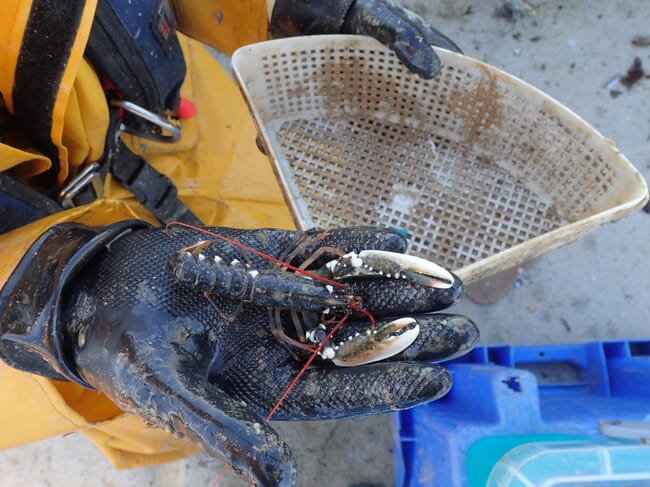
© Dr Carly Daniels
The study involved ongrowing and monitoring juvenile lobsters which had been placed in pioneering grow-out containers. Half were hung at a depth of 2m outside the salmon pens to see if they would feed on particulate waste from the farm, while the other containers were placed 300 m from the salmon farm.
Analysis revealed that lobsters directly utilised particulate waste from salmon production, as levels of indicator fatty acids from salmon feed were significantly higher in lobster tissues near the fish cages compared to the control site. The researchers suggested that this uptake could have been via direct consumption of waste feed or faecal material, or indirectly through the consumption of fouling organisms in the containers. However, while the Lobsters grew “significantly” over the trial period at both sites, there was no significant difference in lobster growth between the sites.
The study was carried out at Lehanagh Pool marine research site in Ireland. The site consisted of two, 50m circumference pens, which had been stocked with salmon smolts, and was being managed according to organic farm standards, with no prescription medicines or antifoulants used. However, in terms of the practicalities of more salmon farms adopting lobster grow-out systems, the researchers note that advantages could include the salmon pens offering additional shelter from storm events as well as a means for the salmon farming sector to generate wider benefits.
“This may also function as an ecosystem service from salmon aquaculture and provide positive societal benefits; for example, if there is improvement of growth and better survival when [the lobsters are] released, it could aid enhancement of local lobster populations and any resulting fishery,” they note.
However, they also stress that the use of medication, such as sea lice treatments, in the salmon farm can be harmful to juvenile lobsters, making many sites unsuitable for integrated salmon/lobster production.
“The effect of routine operations, such as disease treatment, on the different components of an IMTA system is not only an issue for lobsters and salmon, but is an essential consideration for any combination of species in an IMTA system. For example, lobsters could only be deployed at sites which use non-medicinal treatments,” the researchers conclude.
Further information
The full study, published in Aquaculture Environment Interactions, under the title European lobsters utilise Atlantic salmon wastes in coastal integrated multi-trophic aquaculture systems is now freely accessible.




